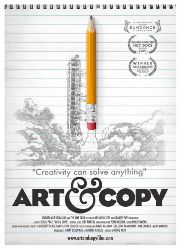

(26.7 × 21.6 cm) / Right: Lesley Schiff - Leopards, 1981, from the portfolio Seasons. Left: Lesley Schiff - Flower in Hand, 1981, from the portfolio Seasons. Since these machines were widely distributed, xerox art had a high democratic potential, as it was available to everyone who was keen on experimentation.

Using the copier as both a camera and printing press, they achieved results that were imaginative and often unexpected.

The machine’s democratic availability at offices, local copy shops, and eventually people’s homes, as well as low costs, enabled artists to experiment outside the confines of a traditional studio. Having seemingly scrappy, DIY nature of the art, it allowed for customization of a format meant for quick’n’easy mass-production. Part of the technology’s appeal were associations with reproducibility and disposability. Whitney Museum of American Art, New York gifts of Judith Goldman The Democratic Potential (26.7 × 21.6 cm) / Right: Lesley Schiff - Columns, 1981, from the portfolio Seasons. Left: Lesley Schiff - Beachball, 1981, from the portfolio Seasons. As the technology was subverted for purposes of experimentation, artists were placing photographs, objects, food, body parts and whatever else that could fit onto the glass surface of the machine. Images could also be reworked by hand and then copied again, creating a superimposition or layers of images, or collaged together in a larger installation. Any degradation of the image served as an advantage, creating engaging visual results.They experimented with techniques of reducing or enlarging images, modulating original color schemes by changing the hue and tone settings or moving the original to achieve variations of color and texture. Soon, other artists started experimenting with it, attracted by the opportunities for montage, distortion and transformation. The technology was first used by artists involved in the International Mail Art Movement of the 1960s, as a quick and inexpensive way to produce spontaneous small-scale collages and works of art suitable for mailing. Shortly after the first Xerox copying machine was made in 1959, artists started experimenting with it, pushing its boundaries and developing a new art form. Whitney Museum of American Art, New York gifts of Judith Goldman The Photocopier as a Site for Experimentation (26.7 × 21.6 cm) / Right: Lesley Schiff - Rocket Ship and Soldier, 1981. Left: Lesley Schiff - Man in Profile, 1981, from the portfolio Seasons. Titled Experiments in Electrostatics: Photocopy Art from the Whitney’s Collection, 1966 - 1986, the exhibition will explore the use of the photocopier as a creative tool, from its public emergence in the 1960s to the dawn of the digital era in the 1980s. Some of these innovative works will soon be on view at the Whitney Museum of American Art.

The speed and ease of this type of image making were liberating. It wasn’t just offices who loved photocopiers artists soon started to make use of innovative techniques in a genre which has come to be known as photocopy art, xerox art or electrographic art.Įmploying technological manipulations, that were sometimes complex but usually quite simple, such as reducing, enlarging, and adjusting the hue and tone, they montaged, distorted and transformed images to create an astonishing array of compelling visual results. When it first came about, this technology was truly groundbreaking. Decades before computer programs and smartphone apps made digital manipulation commonplace, the photocopy machine offered novel ways to transform images.


 0 kommentar(er)
0 kommentar(er)
